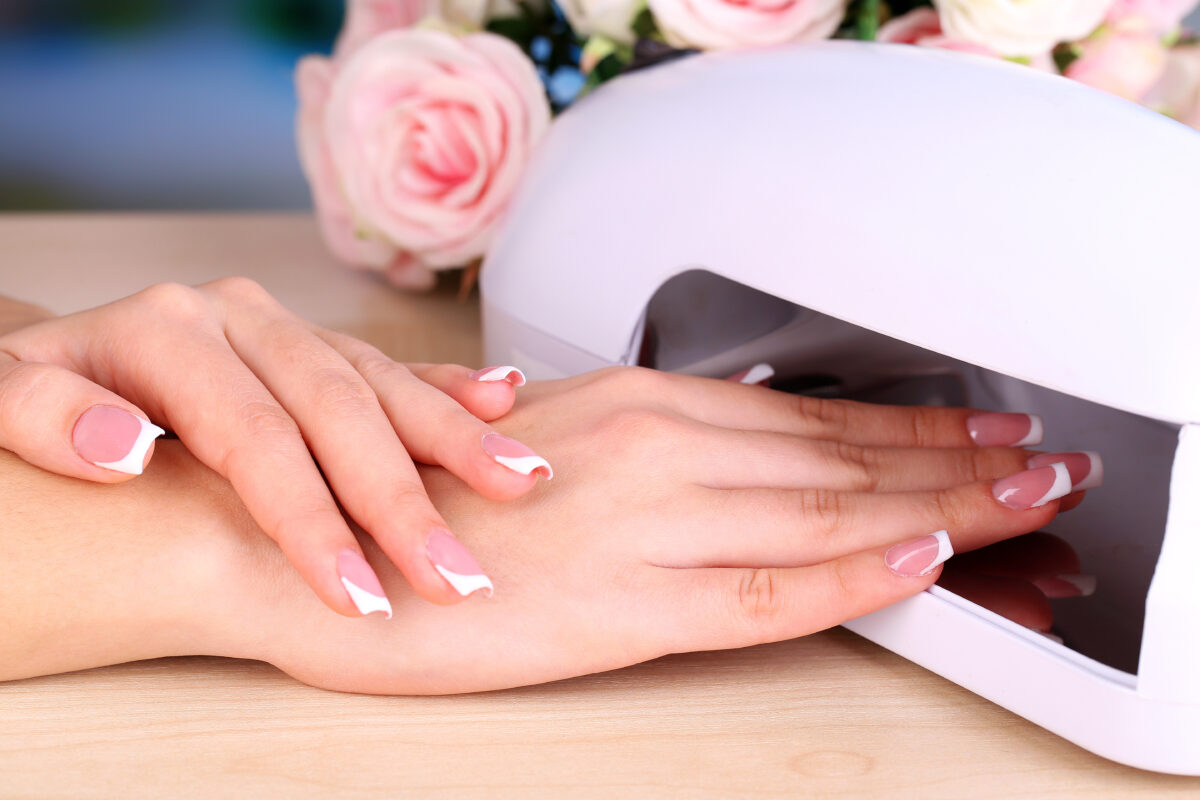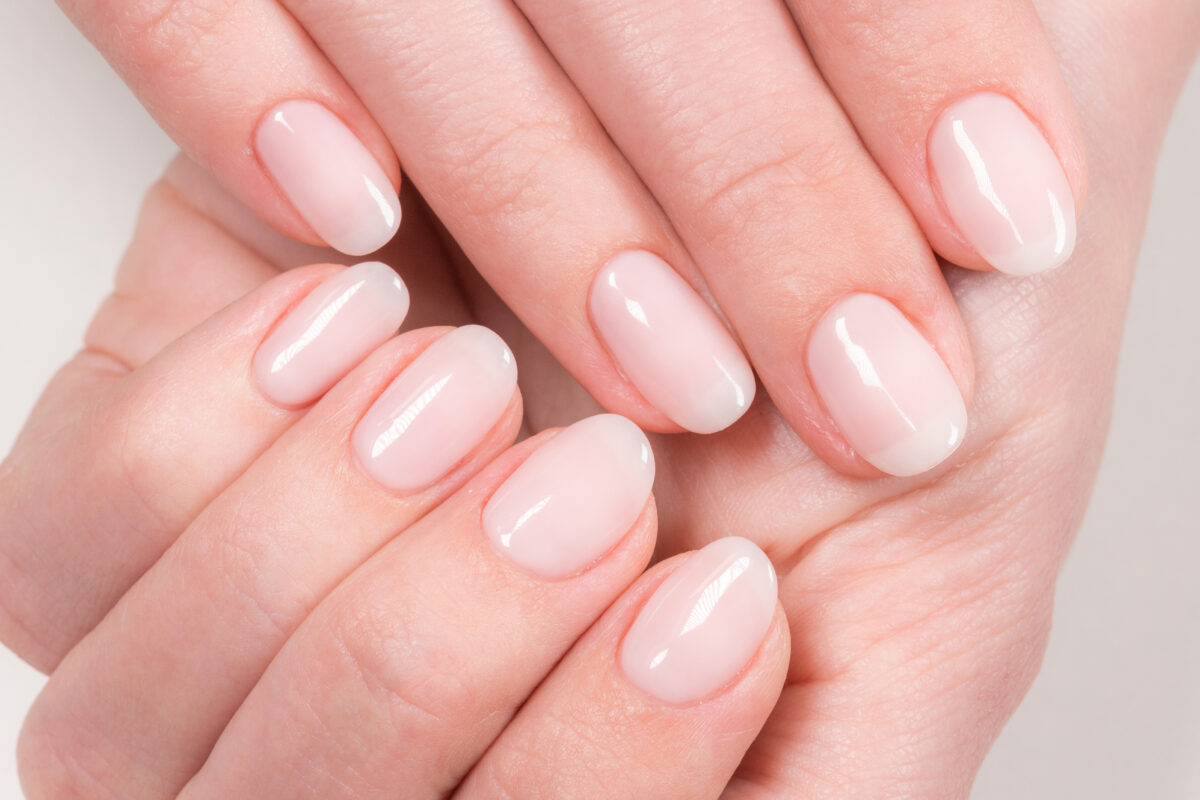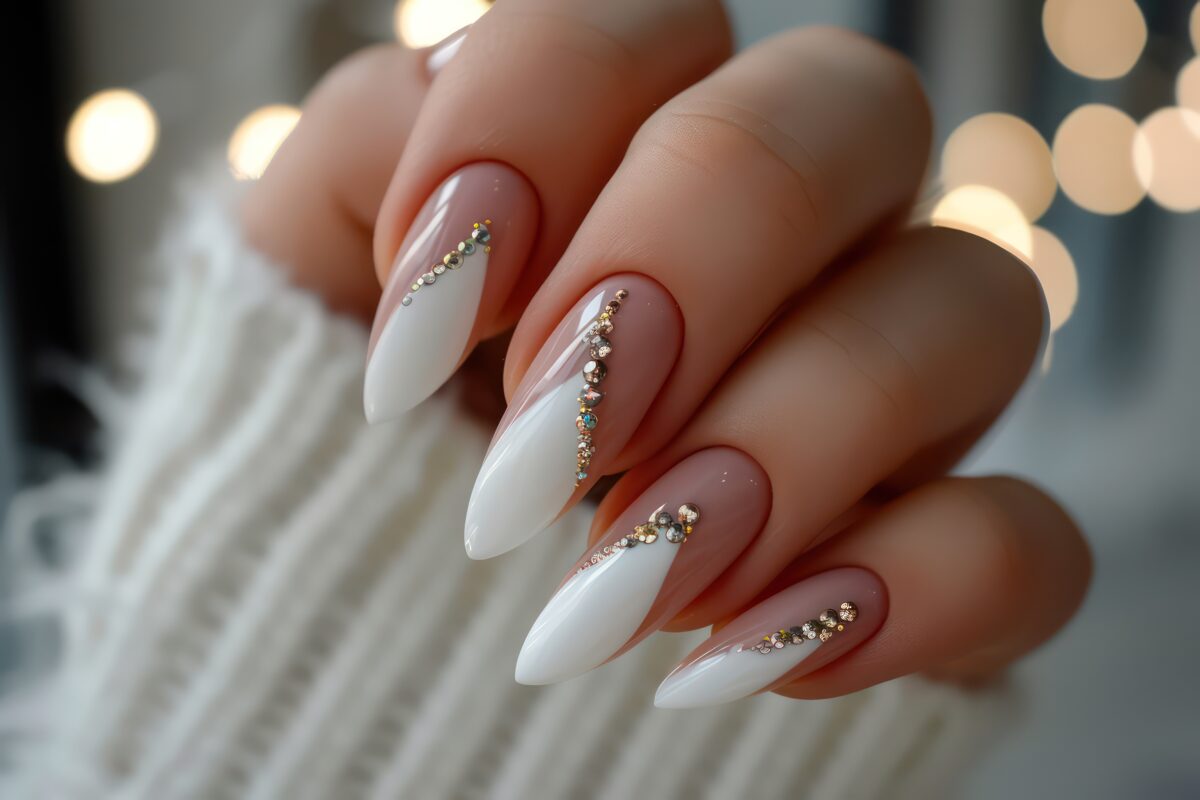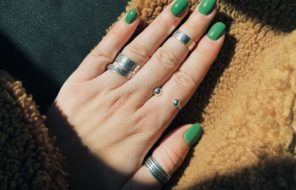Acrylic nails are designed to enhance the appearance and strength of your actual nail. Acrylic nails usually provide a more uniformed and longer-lasting manicured style that can last for weeks. The shape, length and thickness are customizable to the style and design that the wearer really wants.
If you have decided to enter the acrylic nail fray, below, you’ll learn everything about acrylic nails, from pros and cons to the differences with other nail extensions.
What are acrylic nails?
Acrylic nails have a long history of dependability and durability that people enjoy. I can attest to this as I wore acrylic nails for years – I loved them. They look good, they are strong and they made my hands look amazing.
Acrylic nails are basically a protective layer, once described by Dana Stern, a board-certified dermatologist and nail specialist, as a coat of armor for nails. Most nail specialists do not recommend nail additions at all, as they can actually weaken nails in the long term (unlike dip powder nails), but let’s be honest, we like the look so most of us will get them anyway for various reasons.
If you have naturally weak nails and it seems like nothing else is working, acrylics could be a great option for you. The acrylic nails are added and built up to the right shape and thickness for your nails. The actual acrylic is a combination of a powder polymer and liquid monomer that cures as it dries into the hard nail covers we know and love.

Differences Between Acrylic Nails, Shellac and Gel Nails
Acrylic nails, shellac and gel nails can be easily confused, if you are not familiar with each nail treatment and what to expect. Acrylic and gel nails are enhancements that are placed over your actual nail, typically in an attempt to lengthen them to one uniform length and shape, and then carry a design on top.
Shellac is the design. With acrylics, the technician can glue on a fake nail, trim it to the right length and then apply the acrylic over it, or they can attach a shield that they build the nail with the acrylic combination. Acrylic nails are also done in an effort to strengthen nails that are already long in order to prevent them from breaking as easily as they would naturally. Once applied the acrylics just have to dry, be shaped and painted.
Gel nails can be placed in much the same way acrylics are, but there is a different formula to build the nail enhancement and a different way to treat it. Gel nails are also known as UV gels because they use UV light to cure the gel formula, though there are other methods (like the no light gels) that you can choose from.
Shellac manicure is a blended use of nail polish and gel to make the design or color remain shiny and last much longer than the nail polish would on its own. The reason that shellac is so often confused with gel and acrylic nail treatments is because of ‘Gel Manicures’, which are essentially shellac. The small amount of the gel used to seal in the color is often just attributed to gel nails, causing confusion for the customer and the tech, if the request is not explained.

Pros and Cons of Acrylic Nails
As with everything, there are upsides and downsides to acrylic nails. The great majority of cons associated with any type of acrylic nail is when it is applied incorrectly. That part is out of the control of a customer who may not know the process, but if you feel like something is wrong, go get it fixed.
Pros:
- All types of acrylic nail enhancements are very strong.
- Acrylic nails can give your hands a more polished look.
- Acrylic nails can be molded on or used to protect your own natural nail.
- The customization options are nearly endless when it comes to shape and style.
- Most breakages can be (carefully) repaired at home.
- Acrylic nails are very easy to remove without damage when you are ready.
Cons:
- Acrylic nails can be expensive to maintain.
- Acrylic nails are rigid, and lack the flexibility unlike your natural nails.
- Acrylic nails do not mimic the natural sheen of nails.
- Applying acrylic nails involves chemicals and resulting fumes until dry.
- Acrylic nails can take longer to dry.
Common Acrylic Nail Shapes
With acrylic nails you can choose to have any nail shape you want, and the popularity of some over others can vary. Some of the most popular acrylic nail shapes currently are:
- Coffin shaped acrylic nails: Coffin shaped nails are similar in shape to ballerina and stiletto shapes, but with a squared tip. The name is chosen because of the resemblance to the shape of a coffin. People do grow their nails out to a good length for this and then have them shaped, but this is a far easier style to achieve with a set of acrylic nails.
- Lipstick acrylic nails: Lipstick acrylic nails follow the same curve as a tube of lipstick for a pretty interesting look. The sides are straight, while the top of the nail features a diagonal curve. There are quite a few variations on the lipstick nail shape, but the general rule of shape is the same.
- Duck shaped acrylic nails: These are flared and certainly eye-catching, but take more getting used to than other styles and shapes, as the dimensions at the end of your hand flare out rather than whittle down. The shape does not change the width on the nail beds, further enhancing the flared shape at the end. Duck nails are ideal for expansive art thanks to the increased nail surface.
- Mountain shaped acrylic nails: (also known as stiletto shaped acrylic nails): Mountain shaped nails are getting as popular as coffin shaped nails thanks to their prevalence on red carpets. The key features for mountain shaped nails are length and a pointed tip. The shape is easy to replicate on both natural nails and enhanced nails, but it certainly looks better on acrylic nails.
- Squoval shaped acrylic nails: These have the perfect combination of the straight walled nail beds of square shaped nails and the smooth oval top of the oval shaped nail. This is a universally flattering shape that is very easy to maintain.
- Almond shaped acrylic nails: This shape helps promote the appearance of lengthy, dainty fingers with a chic end. This shape is typically for shorter nail lengths, so maintaining a shorter length is important, and it can be done on natural or acrylic nails.
- Oval shaped nails: Oval shaped nails are the obvious result of combining almond, square and rounded nail shapes on acrylic nails. The more rounded look is considered to be inherently feminine, and the shape is easy to achieve with natural and acrylic nails.
- Round shaped nails: These are the perfect easy-to-do and -maintain shape for short nail designs. If you are not looking to seriously extend, just protect your nails with a coat of acrylic, you can always go with the round shape. It is a very natural look that is easily one of the most appealing and non-assuming.
- Square shaped nails: Square nails are ideal for anyone with a wider nail bed, as they can be filed down to the appropriate square shape (for a French manicure, for example). It honestly is flattering on all hands regardless of the size of the nail beds.
Choosing the shape of your acrylic nails is as individual as the style of manicure or nail art that you get. It is fun to try out new shapes that may be slightly out of your comfort zone, but you never know what you might get attached to.

How much do acrylic nails cost?
Getting a full set of acrylic nails can cost a good amount anywhere for $30 for a bare-bones basic set to more $200 depending on the location and any additional services included. The cost of a fill will never be anywhere near as high as the cost of the initial set, as a fill is basically a touch-up service that happens every few weeks.
Mostly, the cost of the service is going to depend on your location. I would suggest starting a search based on your zip code to see what the highest rated places around you are charging. If you wonder what actually goes into building the price of a full set, here are a few considerations.
The expertise of your tech is going to start the cost of your full set of acrylic nails. The next consideration that goes into building the price is the type of set you are getting – will this be a clear set of acrylic nails? Will you have nail art?
Natural looking acrylic nail sets are often the least expensive, followed by a simple coat of color and finally the range of nail art. The amount of art that can be displayed on the small surface of a fingernail – even an extended one – can be pretty amazing.
This includes not just the design, but also the shape of the nail, as certain shapes require more sculpting than others. It is best to research options, like some of those offered in this article, and find out what appeals to you most, then request a quote based on that design.
How long do acrylic nails last?
Between fill-ins, acrylic nails typically last up to 3 weeks before they obviously need to be tended to. It is ideal not to wait any longer than 3 weeks before getting your acrylic nails filled in or filling them in yourself.
Any period of time longer than 3 weeks makes the acrylic nails more prone to breakage, and by then the nail polish is beginning to appear dull just from the daily use of your hands.
How To Care For Acrylic Nails
- First and foremost, get to know your nail tech. Keeping a regular schedule with a nail technician you trust will ensure reliability and comfort with your acrylic nails. You won’t have to explain your personal style too often and it will be easier for your nail tech to design looks for you or get your nail art or manicure just right. Also I cannot stress this enough – tip well! Acrylic nails are art – show your artist some appreciation. You’ll also know how much your fill-ins will cost reliably, which will allow you to budget well to maintain your acrylics.
- Scrub like a surgeon – this will ensure your acrylics stay as clean as possible. Make certain you get under your nails when you wash your hands and start using a nail brush to get any mess out from under your tips. You’d be surprised how often makeup gets under longer nails, just as an example.
- Keep your acrylic nails as dry as possible in order to prevent the acrylic overlays from lifting. Whenever you take a shower, wash your hands or swim, make sure to thoroughly dry your hands and nails. You will want to get used to washing dishes with gloves on as well.
- Moisturize your hands! Not only is moisturizing good for your hands, but it can also help to extend the life of your acrylics.
- Steer clear of acetone-based nail polish removers, which can make acrylic deteriorate. Also keep your acrylic nails polished by using long-lasting good-quality nail polishes and top coats.
- Finally and most importantly, allergic reactions can develop at any time. I don’t say this to scare you – it is a reality. If you start to notice burning, itching, peeling or swelling around your nails, call your nail tech and if necessary, your doctor. Your body signals when something is wrong so pay attention and act quickly. In some cases it may be a reaction to the chemicals, you could have an infection, it could be something, and even though it is rare, you should keep an eye out no matter what you are using.
How To Remove Acrylic Nails
Removing acrylic nails is done one of two ways. The first is the quickest, but can be really bothersome for those with weaker or more brittle nails. With this method, the acrylic nail is clipped down around the edges, and they use faux nail to slip in between the acrylic nail and the natural nail. The fake nail is slid around between the acrylic and natural nail until the acrylic comes off.
The second method is gentler, but also more time-consuming. The acrylic nails are soaked in acetone, then filed down, and the process repeated until the old set is completely removed. Both of these methods can be done at home or at the nail salon. Check out our guide to removing acrylic nails at home to do it on your own!





